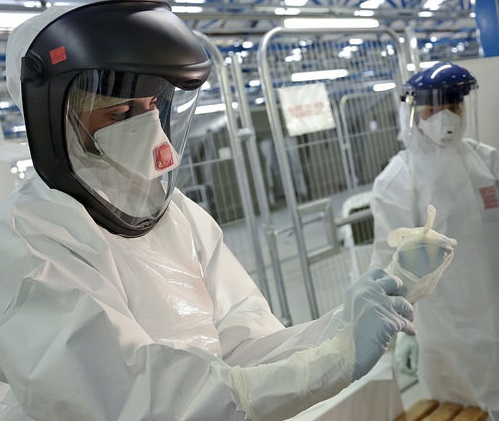 UK Department for International Development
UK Department for International Development
Climate Change Will Drive Future Epidemics. How Are We Preparing?
Introduction
The rapid spread of the Wuhan Coronavirus has renewed public interest in the threat of a pandemic. In just over a month, the coronavirus has spread to more than 20000 people in China and is responsible for at least 420 deaths. The massive mobilization to contain the virus is likely to prevent a global health disaster this time, but future outbreaks are going to be harder to control.
Climate change will play an important role in epidemics going forward. The links between contagion and climate are many, but they generally fall into two buckets: increased geographic ranges for disease vectors and climate-related human diaspora.
Global Connections: Climate & Disease
Diseases are often spread by non-human vectors, such as mosquitos. Experts have linked the global expansion of Aedes mosquitos, and the illnesses that come with them, to climate change. It’s estimated that 1 billion people will have their first exposure to mosquito-transmitted viruses in the coming century. The populations living in these new geographic ranges have low natural immunity or are unprepared for outbreaks. In late 2014, the arrival of the Zika virus in an underprepared Brazil saw more than 200,000 confirmed infections in 24 months. That initial exposure, probably due to the introduction of the mosquito Aedes aegypti from Africa, led to tens of thousands of further infections across the Americas. Non-human vectors are generally responsible for first contact, but humans are often the best vectors for worldwide transmission thanks to increasing globalization.
Human displacement will rise due to climate exacerbated phenomena including coastal flooding, devastating storms, and extreme wildfires. Forced displacement is linked to increased infection rates and is projected to worsen with further warming. Displaced people will migrate, sometimes within their own nations but often to places far from their homes. Refugees will inevitably bring infectious diseases with them on their travels through crowded migrant camps and transportation systems destined for large urban areas. Unprepared and overwhelmed nations will see stress on healthcare systems and possibly domestic political conflict related to an influx of climate refugees. Given how disruptive an epidemic could potentially be, what are we doing to prepare?
Preparations
Governments worldwide are taking notice of how improvised their responses have been to relatively minor outbreaks. Compounding that dearth of preparedness with the increased threat posed by a warming climate creates potential for economic, national security, and humanitarian disasters. Luckily, some preparations are already underway to prepare for a pandemic.
- The CDC has developed a Strategic Plan to combat the spread of emerging diseases that includes suggestions for improving on existing plans.
- The WHO has a Pandemic Influenza Preparedness framework that is regularly updated with progress reports. These reports include data relating to effectiveness, implementation goals, and suggestions on how to improve the framework.
- U.S. troops who are stationed in disease-prone areas and are frequently involved in humanitarian disaster relief are uniquely vulnerable. The various branches are working on their own epidemic readiness plans and, according to their responses to a 2017 GAO report, are working together to implement those plans.
Conclusion
Emerging diseases periodically remind us of the threat of a global epidemic. China’s effort to crush the novel coronavirus has stirred up memories of their flawed response to SARS. The CDC and WHO have, so far, done an excellent job of controlling the coronavirus outside of China, but this episode has exposed how an outbreak can strain underfunded global health infrastructure.
When a new disease emerges, we keep track of new infections by the hour, only to promptly forget our fear once it’s contained. That kind of thinking only kicks the can down the road. Lasting, effective preparation for climate-related threats requires focused and continuous planning. The costs and challenges associated with making these preparations now can seem like an overwhelming task, but it will only be harder to address inadequacies amid future chaos. Let’s not let this moment of awareness slip from our grasp.





